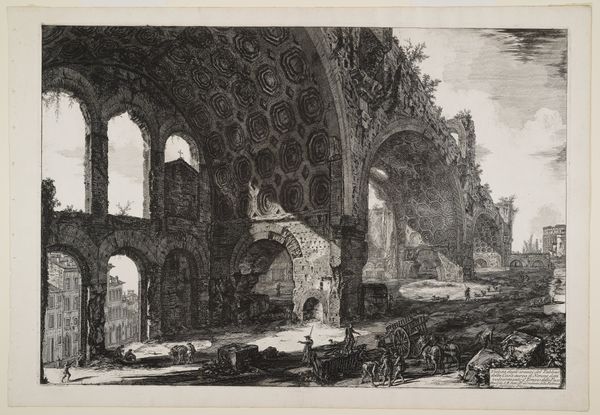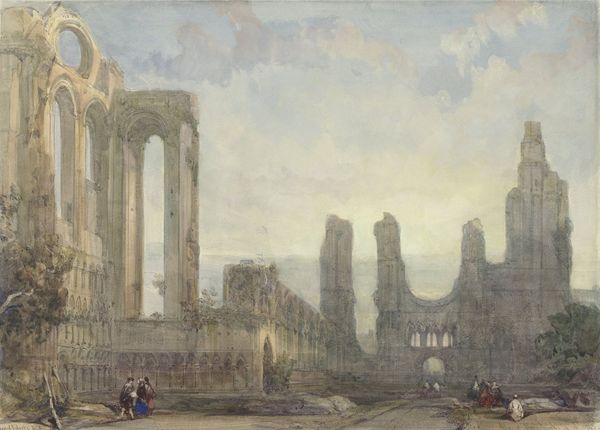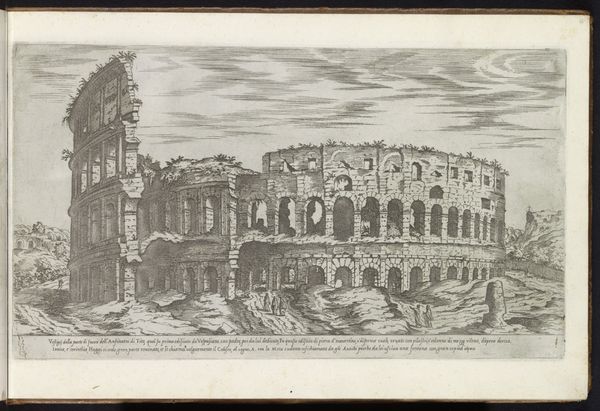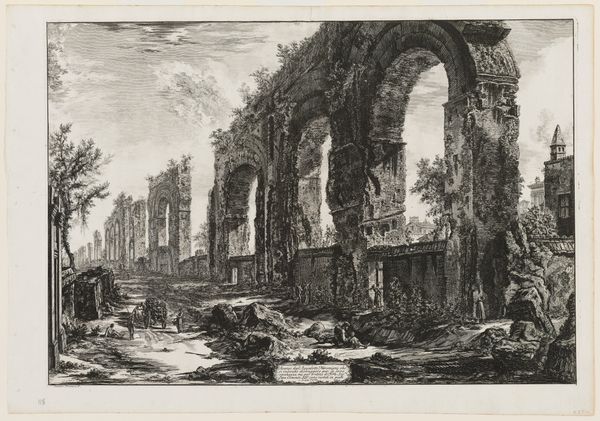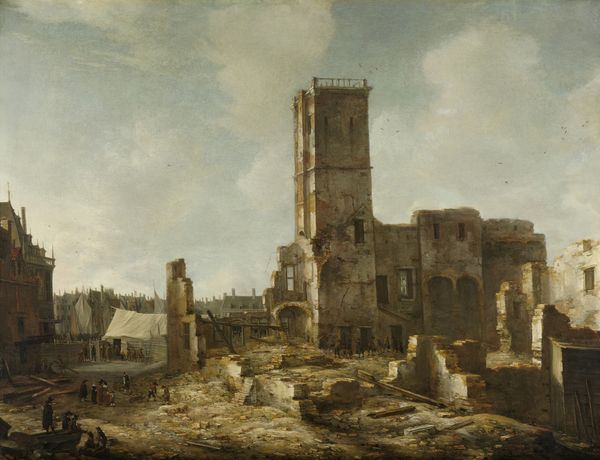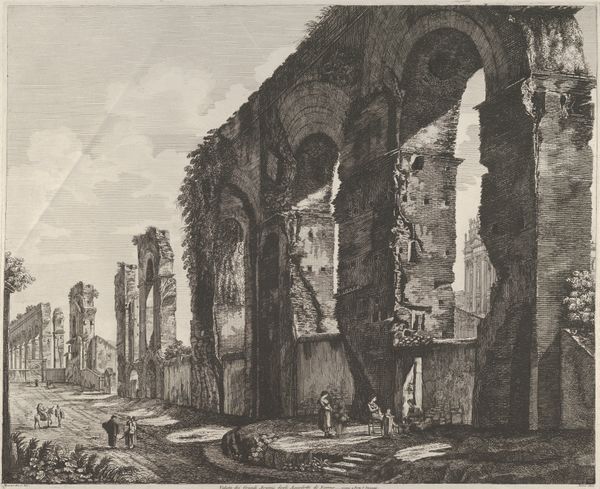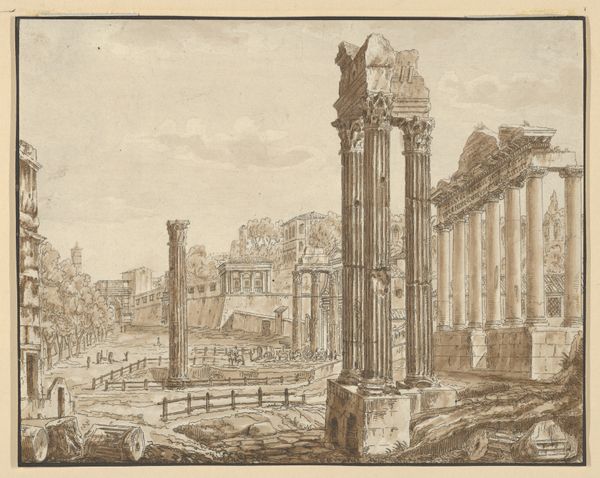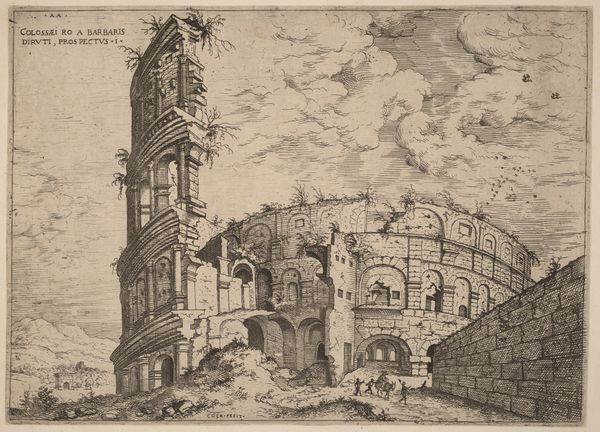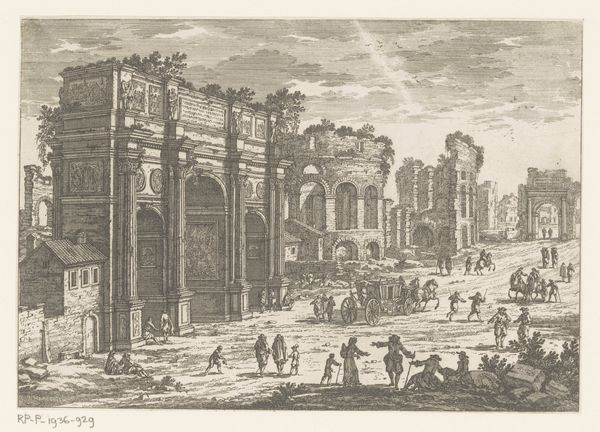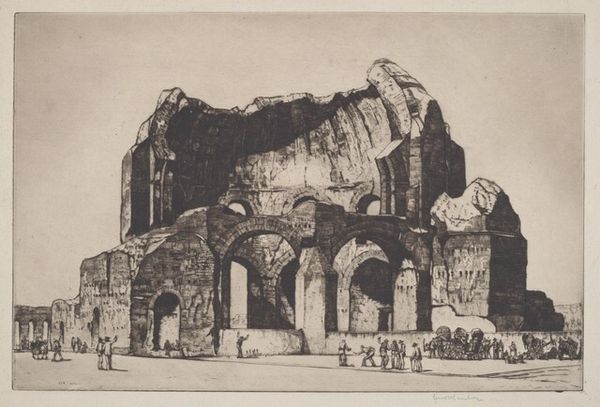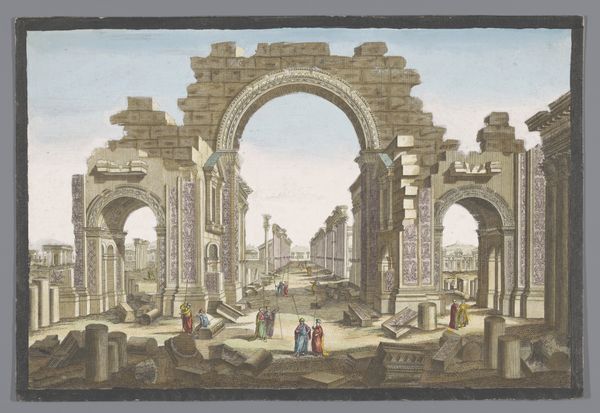
Dimensions: 17 1/2 x 26 in. (44.4 x 66 cm.)
Copyright: Public Domain
Curator: Abraham Louis Rodolphe Ducros's "The Colosseum, Rome," created between 1760 and 1810, captures the ancient amphitheater in watercolor. What’s your initial reaction? Editor: My first impression is melancholic beauty. There's something incredibly evocative about seeing this iconic structure depicted in such a fragile, almost ethereal medium. The watercolor softens the harsh reality of the Colosseum's ruinous state, hinting at the passage of time. Curator: Absolutely. The softness contrasts dramatically with the monumentality of the subject, doesn't it? Ducros masterfully uses watercolor to convey the layers of history etched into the Colosseum's architecture. Note how the light dances across the remaining structure, almost breathing life into it. Editor: I do see that, and those soft hues add depth and dimensionality. The overall composition emphasizes verticality with a sharp diagonal across the composition, highlighting both the decay and endurance. The figures placed at the bottom, do they signify something? Curator: Possibly, you're spot on. Those tiny figures at the base underscore the immense scale, but perhaps also remind us of our fleeting existence in comparison to such historical weight. They’re a subtle memento mori. The whole painting really grapples with ideas about the grandeur of the past juxtaposed with present-day decline, wouldn’t you agree? Editor: Definitely. And there is the almost uncanny quality with which Ducros paints nature reclaiming the spaces between architectural relics. Curator: It becomes an active participant, obscuring the precision. In doing so, it reflects a Romantic sensibility, idealizing not just the classical past but its inevitable decay. Editor: This play of textures with the soft and gentle wash seems to underline how time simultaneously erodes and exalts our perceptions of past grandeur. What a wonderfully conflicting work. Curator: Precisely, this interplay speaks volumes, I think. Well, that was quite enlightening. I appreciate your perspectives. Editor: My pleasure; thank you for guiding me through Ducros’s masterpiece!
Comments
No comments
Be the first to comment and join the conversation on the ultimate creative platform.


